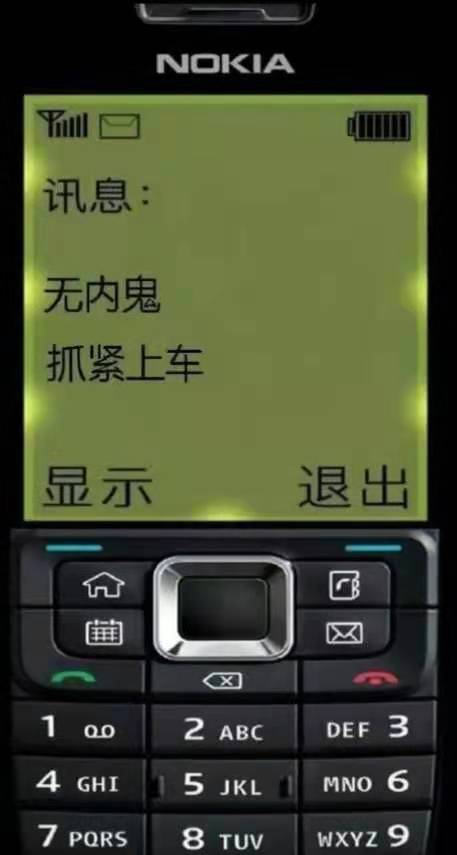這裡給大家分享我在網上總結出來的一些知識,希望對大家有所幫助 最簡單的代碼,最極致的享受,主打的就是一個炫酷~ 滾動視差 滾動視差效果(Parallax Scrolling)是指讓多層背景以不同的速度位移,形成立體的運動效果的視覺體驗,在前端強交互的時代,更應該多考慮這種用戶體驗較好的動效~ 實現方 ...
這裡給大家分享我在網上總結出來的一些知識,希望對大家有所幫助
最簡單的代碼,最極致的享受,主打的就是一個炫酷~
滾動視差
滾動視差效果(Parallax Scrolling)是指讓多層背景以不同的速度位移,形成立體的運動效果的視覺體驗,在前端強交互的時代,更應該多考慮這種用戶體驗較好的動效~
實現方案
- JS監聽瀏覽器 scroll 事件,不斷改變元素位置
- background-attachment屬性,將圖片位置相對於視口固定
- translateZ()修改元素的縮小比例,使得滾動速度出現差異
JS實現
// html
<div class="parallax">
<img src="./images/bc1.png" id="bc1" />
<img src="./images/bc2.png" id="bc2" />
<img src="./images/bc3.png" id="bc3" />
<img src="./images/bc4.png" id="bc4" />
<img src="./images/bc5.png" id="bc5" />
<img src="./images/tree.png" id="tree" />
<h2 id="text">Rolling Parallax</h2>
<img src="./images/leaf.png" id="leaf" />
<img src="./images/plant.png" id="plant" />
</div>
<div class="contentBox">
<h2>Parallax Scrolling</h2>
<text class="content">
content...
</text>
</div>
//css
@import url("https://fonts.googleapis.com/css?family=Luckiest+Guy");
* {
margin: 0;
padding: 0;
box-sizing: border-box;
font-family: "Luckiest Guy", cursive;
}
body {
background: #f9f9f9;
min-height: 100vh;
overflow-x: hidden;
}
.parallax {
position: relative;
display: flex;
justify-content: center;
align-items: center;
height: 100vh;
}
.parallax img {
position: absolute;
top: 0;
left: 0;
width: 100%;
pointer-events: none;
}
#text {
position: absolute;
font-size: 5em;
color: #fff;
text-shadow: 2px 2px 4px rgba(0, 0, 0, 0.2);
letter-spacing: 10px;
}
.contentBox {
position: relative;
background: #003329;
padding: 100px;
}
.contentBox h2 {
font-size: 36px;
color: #fff;
margin-bottom: 10px;
letter-spacing: 2px;
}
.contentBox .content {
font-size: 20px;
color: #fff;
font-weight: 300;
line-height: 28px;
letter-spacing: 2px;
}
//js
let text = document.getElementById("text");
let leaf = document.getElementById("leaf");
let bc1 = document.getElementById("bc1");
let bc4 = document.getElementById("bc4");
let bc5 = document.getElementById("bc5");
window.addEventListener("scroll", () => {
const value = window.scrollY;
text.style.marginTop = value * 1.5 + "px";
leaf.style.top = value * -1.5 + "px";
leaf.style.left = value * 1.5 + "px";
bc1.style.top = value * 0.5 + "px";
bc4.style.left = value * -1.5 + "px";
bc5.style.left = value * 1.5 + "px";
});
預覽效果如下
CSS-background-attachment
前置知識
首先 background-attachment 要和 background-image 一起使用才有意義,表示的是背景圖像是否固定或者隨著頁面的其餘部分滾動。
background-attachment 有四個可選值:fixed,scroll,local,inherit。
scroll 是該屬性的預設值,表示背景圖相對於元素固定,簡單理解就是兩者綁定住了,所以元素滾動了圖片也會跟著滾動。
local 表示背景圖相對於元素內容固定,而相對於其他滾動條則會滾動。舉例來說,假如元素內部設置了overflow:scroll,則元素內部會出現滾動條,此時滾動元素內部滾動條的時候,背景圖會隨著滾動而滾動。而如果我們設置 background-attachment:scroll ,則背景圖會隨著元素內部滾動而固定住。
fixed 表示背景圖相對於視口固定,無論怎麼滾動,元素都巋然不動,如果多個元素都設置了fixed,他們也只會在自己的元素內顯示,互不影響。
inherit 只是指定 background-attachment 的設置從父元素繼承。
scroll與local的區別
scroll效果如下
local效果如下
//html
<div class="image_1">
<div class="word">Bye bye, Lucia</div>
</div>
<div class="bg">The best hard are always the bravest</div>
<div class="image_2">
<div class="word">All children, except one, grow up</div>
</div>
<div class="bg">It's better to burn out than to fade away</div>
<div class="image_3">
<div class="word">Fading is true while flowering is past</div>
</div>
<div class="bg">There was no possibility of taking a walk</div>
<div class="image_4">
<div class="word">All this happened, more or less</div>
</div>
//css
* {
padding: 0;
margin: 0;
}
.image_1 {
background-image: url(./images/1.webp);
background-position: 0 0;
background-attachment: fixed;
background-size: cover;
height: 680px;
width: 100%;
}
.image_2 {
background-image: url(./images/2.jpg);
background-position: 0 0;
background-attachment: fixed;
background-size: cover;
height: 680px;
width: 100%;
}
.image_3 {
background-image: url(./images/3.jpg);
background-position: 0 0;
background-attachment: fixed;
background-size: cover;
height: 680px;
width: 100%;
}
.image_4 {
background-image: url(./images/4.jpeg);
background-position: 0 0;
background-attachment: fixed;
background-size: cover;
height: 680px;
width: 100%;
}
.word {
position: relative;
top: 480px;
font-size: 55px;
color: white;
text-align: center;
font-weight: bolder;
}
.bg {
text-align: center;
font-size: 46px;
font-weight: bolder;
height: 220px;
line-height: 220px;
background-color: rgb(131, 134, 204);
color: white;
}
預覽效果如下
CSS-translateZ
前置知識
transform-style: preserve-3d表示讓子元素保留3D轉換。
好吧,直接上代碼~
//html
<div class="wrapper">
<div class="demo"></div>
</div>
//css
body {
perspective: 800px;
perspective-origin: 250px 300px;
}
.wrapper {
position: relative;
left: 200px;
top: 100px;
height: 480px;
width: 60%;
background-color: #0ff;
transform: rotateY(45deg);
/* transform-style: preserve-3d; */
}
.demo {
height: 100%;
background-image: url(./images/3.jpg);
background-size: cover;
transform: translateZ(100px);
}
不加preserve-3d效果
加上preserve-3d效果
看出差異了吧,有層次了,立體感高高的~
需要註意的是 transform-style: preserve-3d 這個屬性加在誰身上,誰的子元素才會有3D效果,比如上面的代碼中把屬性加在 body 上是沒有效果的。
perspective 定義3D元素距視圖的距離。
簡單來理解,如果我設置了 perspective:500px,則表示我在離屏幕500px遠的地方觀看這個元素。註意一下官方講解的 當為元素定義 perspective 屬性時,其子元素會獲得透視效果,所以我們需要將這個屬性設置在父元素上。
加上perspective效果
不加perspective效果
視距 = 距離產生美~
translateZ: 向Z軸平移。
我們現在和屏幕的距離就是Z軸,所以Z軸是朝向我們的,如果translateZ裡面的值越大,說明屏幕離我們越近,translateZ裡面的值越小,屏幕離我們就越遠。
perspective和translateZ的化學反應
這兩者有什麼區別呢,簡單的說就是translateZ是移動圖片,perspective是移動人和屏幕的距離。但是當這兩者結合起來的時候神奇的事情就會發生~
//html
<div class="wrapper">
<div class="demo"></div>
</div>
//css
.wrapper {
position: relative;
left: 200px;
top: 100px;
height: 480px;
width: 60%;
perspective: 800px;
}
.demo {
height: 100%;
background-image: url(./images/3.jpg);
background-size: cover;
transform: translateZ(-100px);
}
perspective: 800px的情況
perspective: 100px的情況
我們把視距調小,圖片竟然變小了,按照道理視距越小說明屏幕離我越近,圖片應該變大才對。其實,這裡我們看到的圖片,並不是圖片本體,而是圖片在屏幕上的投影。
同理,我們去理解translateZ的值變大,圖片變大也比較容易了。
translateZ(-100px)的情況
translateZ(-20px)的情況
那麼只要我們將不同的元素的translateZ設置成不同的負值,那麼越大值的元素,它的投影就會越大,滾動速度就會越快,當然這些元素的滾動速度也只有translateZ(0)的幾分之一~
//html
<div class="g-container">
<div class="section-one">translateZ(-1)</div>
<div class="section-two">translateZ(-2)</div>
<div class="section-three">translateZ(-3)</div>
</div>
//css
html {
height: 100%;
overflow: hidden;
}
body {
margin: 0;
padding: 0;
height: 100%;
overflow-y: scroll;
overflow-x: hidden;
perspective: 2px;
}
.g-container {
position: relative;
transform-style: preserve-3d;
transform-origin: center center;
height: 150%;
}
.g-container div {
font-size: 5vw;
position: absolute;
top: 20%;
}
.section-one {
left: 0%;
background: rgba(10, 10, 10, 0.2);
transform: translateZ(-1px);
}
.section-two {
left: 40%;
background: rgba(30, 130, 30, 0.2);
transform: translateZ(-2px);
}
.section-three {
left: 90%;
background: rgba(200, 100, 130, 0.2);
transform: translateZ(-3px);
}





